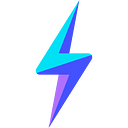8 THINGS YOU MUST KNOW ABOUT UX
8 things you need to know about UX in Hong Kong
1. What is User Experience (UX) Design?
UX is short for user experience, and UX is actually the process of designing a good product, where the product is easy to use and understand by the user. In a more technical sense, UX can also mean the application of human psychology to any business. One can think of UX as the bridge between business and UX.
2. Bad UX vs. Good UX
Good UX is anything that is designed in a way where users can intuitively understand how to use a product. Good UX should be invisible, you would not even notice that it’s there! One simple example would be the Normal Door (named after Don Norman, father of UX) — -to push or to pull the door, that is the question. When you see a door, based on the design of the knob or handle, you would not even think twice whether to push or to pull. If you made a fool out of yourself by pushing a supposedly to be pulled door, it is completely the designer’s fault, and it is bad UX.
3 must have skills for a UX designer
So, if you’ve asked yourself: what skills do you need to be a good UX designer? Look no further. Here are 3 must-have skills for UX designers, in no particular order.
3.1. Empathy
Empathy is one of the most important skills in product design because you have to understand the needs of the users and know what problems they may face, essentially putting yourself in their shoes in order to create the most user-friendly product.
3.2. Communication
Communication is another skill much needed in the industry as UX is a relatively new field in Hong Kong, you need to be able to convey why UX is needed or how it is used, and be able to document your ideas for the team to understand. Communication skills are also much needed as a designer since you have to work with different stakeholders, executives and developers etc.
3.3. Be open mind and receptive
Lastly, keep an open mind and be receptive to continuous learning since the industry is constantly changing, from the latest design tools, design trends and marketing trends, you have to be updated.
4. Responsibilities of a UX designer
Here are 6 key responsibilities of a UX designer:
1. Research
Interviewing users and stakeholders to see their needs and doing comparative analysis to see where your product stands among other in the industry
2. Modeling
Creating a persona, and from that perspective see how users would use and interact with the product
3. Ideation
Construct context scenarios, analyze functional needs and prioritize certain features of the product
4. Design
Do sketching, wireframing and prototyping
5. Test
Testing the usability of the product by validating scenarios, walking through the key paths and testing interactive prototypes
6. Presentation
Present your prototype and optimize the features of the product
5. What tools do UI/UX designers use?
Figma, Sketch and Adobe XD are the main three tools UX designers use for designing the UI (user interface) of a product.
To know more about the differences between the three tools, you can check out this article: Figma vs Adobe XD vs Sketch: Which Wireframing Tool is the Best?
6. Roles of a UX designer
UX designer is one of the most popular jobs, not to be confused with UI designers, who focus on the interface and work with the visual side of product design involving for example graphic design and typography. However, a lot of hiring managers in Hong Kong often put UX/UI designers in the job descriptions. In big companies in Hong Kong, the UX team is divided up into different roles. Here are some of the roles in a UX team.
- UX Researchers
UX researchers are people who conduct user research in the team.
- Information Architects
Information architects are in charge of the architecture, and take information from researchers and lay it out in the order of hierarchy so people can understand that.
- Service Designers
Service designers create the features and options that users would need.
- Experience Designers
Experience designers would design how the users would interact with the product in order to elevate their experience.
- Product Designers
Product designers have to do everything since the beginning of the design cycle.
Also Read:How to Become a UX Designer in Hong Kong
7. How to apply UX to your company?
Adaption is the key to apply UX to your company. The process is always the same, you collect the data, you organize the data in a way people understand, put it in a tangible format where people can visualise, have a prototype ready, test them out, see everything works and put it out in the market. As for companies, the users you target are people in the organization and your goal is how to make their job easier, increase efficiency and add interest to their work. The same UX process can be applied, but with a change in objective that aligns with your company’s business goals.
8. Where can you learn UX from?
This depends on your level of commitment, time and money constraints and your learning style. There are a variety of resources available online such as YouTube tutorials and online courses. You can also pursue a degree in design, human-centred design, or human-computer interaction design. There are also boot camps available, such as Xccelerate’s full-time UX bootcamp and part-time UX courses, which equips you with the skills of a UX designer just in a few months’ time. Lastly, continuous self-learning can bolster your career as a UX designer, books like Don Norman’s “the Design of Everyday Things” and Steve Krug’s “Don’t Make Me Think” are interesting reads to inspire your creative senses.
